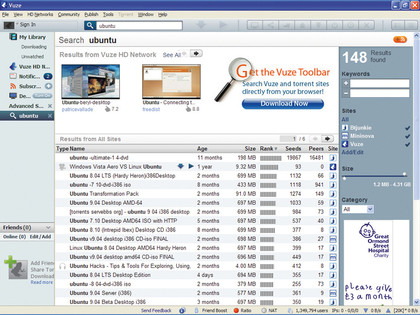Off the grid: the darknet exposed
Darknets, as opposed to 'the' darknet, are groups of networked computers and the technologies they run that enable them to swap files. This is usually done illegally, but that's not the only way they're used.
Darknets began life long ago as 'sneaker nets': loose associations of individuals and friends with lists of CDs and tapes they were willing to swap. As the internet took off in the 1990s, geography stopped being a constraint on the activities of sneaker nets.
The original internet-based darknets were simply insecure or public FTP servers where users could upload stolen files for others to download.
Reaching the peak of their popularity in around 1998, such servers were easily shut down by law enforcement agencies. In response, illegal file sharers moved to peer-to-peer technologies to cover their tracks.
In a paper presented to the 2002 Association of Computing Machinery Workshop on Digital Rights Management, four researchers from Microsoft charted the rise of internet-based darknets.
One file-sharing system they singled out was Napster. "There should be little doubt," said the researchers, "that a major portion of the massive (for the time) traffic on Napster was of copyrighted [files] being transferred in a peer-to-peer model in violation of copyright law."
Napster claimed not to store any copyrighted material, but it did maintain a central database of who had what content for download. This was its Achilles' heel, but as the Microsoft researchers rightly pointed out, "ultimately the darknet-genie will not be put back into the bottle".
Sign up for breaking news, reviews, opinion, top tech deals, and more.
Their prediction soon came true. After the demise of Napster in July 2001, the Gnutella protocol became popular. Programmers coded their own Gnutella clients and users formed peer-to-peer darknets with them to swap content.
This time, however, there was no central database of who had what file. Instead, the protocol swapped this information directly between the users' computers.
Today, BitTorrent has become the most widely used darknet protocol on the internet, and it accounts for around 40 per cent of all traffic.

VUZE: Peer-to-peer clients like Vuze aren't just used by pirates: they're also used to download legitimate content
However, the way this and other peer-to-peer protocols share files also make them ideal for streaming huge, legitimate files such as Linux distributions without putting undue stress on any one PC.
The BBC's iPlayer streaming media service originally used Kontiki's peer-to-peer technology, as do Sky Anytime and Channel 4's On Demand service. The darknet genie may be out of the bottle, but it's certainly not all bad.
-------------------------------------------------------------------------------------------------------
First published in PC Plus Issue 287
Liked this? Then check out Network scanning secrets revealed
Sign up for TechRadar's free Weird Week in Tech newsletter
Get the oddest tech stories of the week, plus the most popular news and reviews delivered straight to your inbox. Sign up at http://www.techradar.com/register